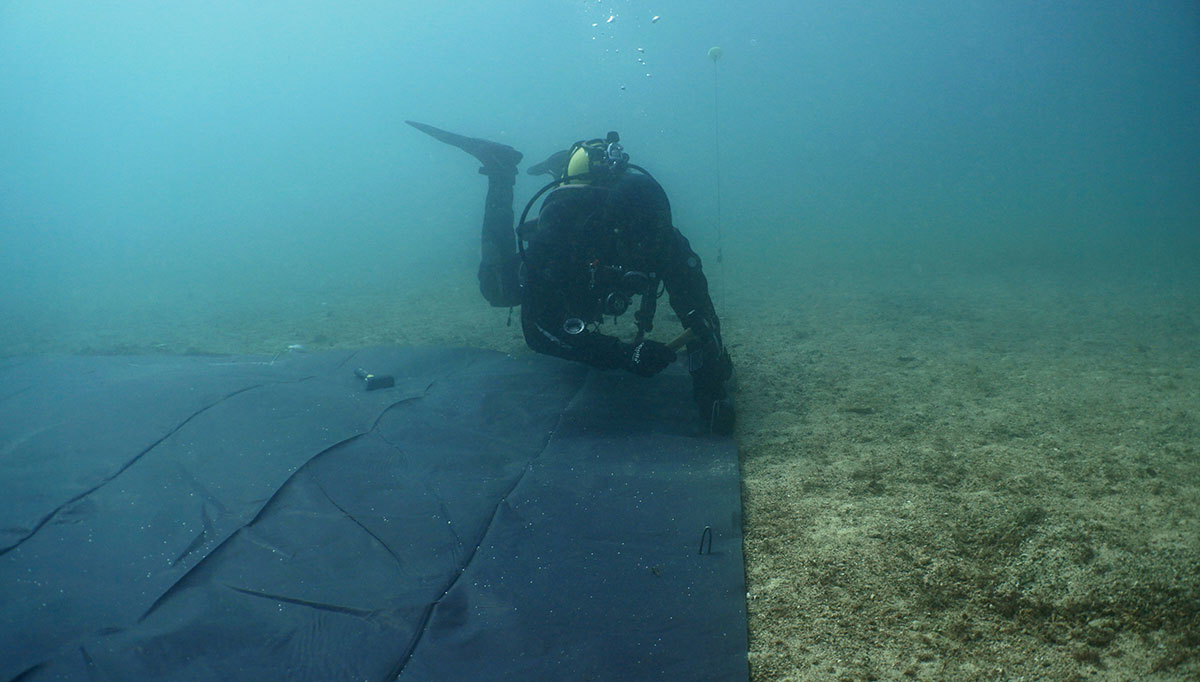Controlled Area Notice ‘step in right direction’
14 Jun 2023, 1:10 PM
A step in the right direction but much more resourcing and action is urgently needed.
That was the Northland Regional Council’s response today to new biosecurity rules to prevent the spread of exotic Caulerpa seaweed making it illegal to fish or anchor a vessel in an area of Te Rāwhiti in the Bay of Islands.
Biosecurity New Zealand’s deputy director-general Stuart Anderson says mana whenua and others in the Northland community understand that preventative measures are needed to attempt to contain invasive Caulerpa.
“These new legal restrictions, known as a Controlled Area Notice (CAN), are important to protect the valued Northland marine environment, but also wider Aotearoa New Zealand waters,” Mr Anderson says.
Patukeha and Ngāti Kuta hapū, have also declared a rāhui over Omākiwi Cove and parts of the Albert Channel, at Te Rāwhiti, preventing boat anchoring, fishing and kaimoana harvesting. The hapu are working together with Biosecurity New Zealand and the NRC after the Caulerpa discovery.
Northland Regional Council’s Deputy Chair Jack Craw – who has a long history in the biosecurity field – welcomed news of the CAN, describing it as an important initial step in the region’s battle against Caulerpa.
Similarly he welcomed the significance of the rahui, saying a collaborative approach with mana whenua was necessary if Northland’s fight against Caulerpa was to be successful.
However, he says the council is urgently requesting that Biosecurity New Zealand/appropriate Government Ministers resource a more ambitious response to eradicate this extreme threat to our coastal waters as a matter of priority.
“Stopping the spread using CANs doesn’t go far enough.”
Councillor Craw says it’s time for the government to put its money where its mouth is and actually release both funding and control in a true display of partnership and let local communities show what they can achieve.
“Our moana can’t afford for indecision around this and we see no valid reason to wait.”
“Biosecurity New Zealand has to date brought a defeatist attitude to this new threat, deeming eradication impossible with the tools available, but without investing in developing and trialling new tools.”
“We believe this represents a manifestly insufficient response and that they should have been preparing for a mainland incursion and readying an eradication response rather than a containment response, as soon as Caulerpa was first discovered on Aotea in 2021.”
Councillor Craw says the regional council is seeking funding to enable “a practical attempt at eradication which we believe, together with mana whenua and our dedicated communities, we can take action on immediately”.
He says that action would use all the tools currently available “and learning/improving by doing”.
“We have the ability to remove Caulerpa via a range of technologies, including suction dredging and suppress areas of biomass through the use of chemical treatments or by depriving the seaweed of light using benthic mats.”
Councillor Craw says the regional council accepts that eradication will be extremely costly and complicated, but the downstream economic, cultural and social impacts of not trying are unacceptable and catastrophic for the marine environment.
“Formally leveraging the vast community capacity, local knowledge, matauranga, passion and kiwi ingenuity that exists here will enable effective management at pace.”
Under Biosecurity New Zealand’s CAN, it is illegal to remove any marine organisms (including fish, seaweed, crayfish or shellfish) from the zone – meaning fishing for any species in the area is not allowed. This includes spearfishing, crayfish, kina and other shellfish gathering, net fishing and drift fishing from any type of vessel.
In addition, no anchoring is allowed in the controlled area, other than for a few permitted activities such as scientific research or where residents are reliant on a vessel for regular transport. Permits from Biosecurity New Zealand will be needed for this. Anchoring in an emergency, such as to shelter from weather, will be allowed.
The area under controls is bounded by Whau Point, the south-eastern tip of Te Ao Island, the eastern shoreline of Poroporo Island and the northern tip of Tokatokahau Point up to the high-tide area.
Full information about exotic Caulerpa and the legal controls is at: www.mpi.govt.nz/biosecurity/exotic-pests-and-diseases-in-new-zealand

NRC marine biosecurity officer Toby Dickson treating a patch of Caulerpa in the Bay of Islands Tuesday, 13 June. (Photo credit: Brett Sutton, Marine Environmental Field Services).
